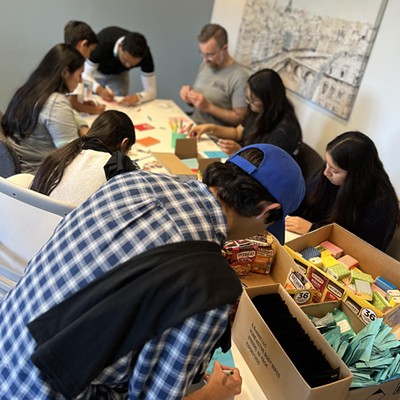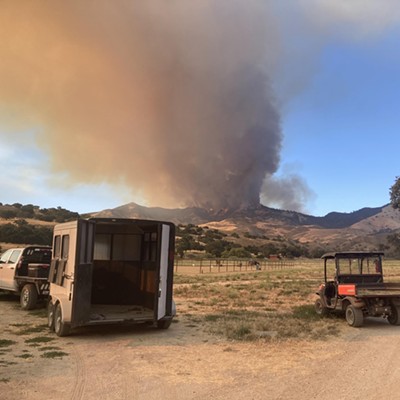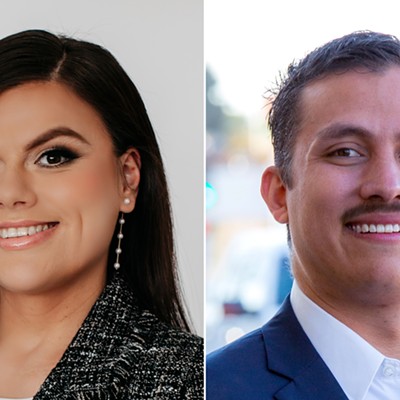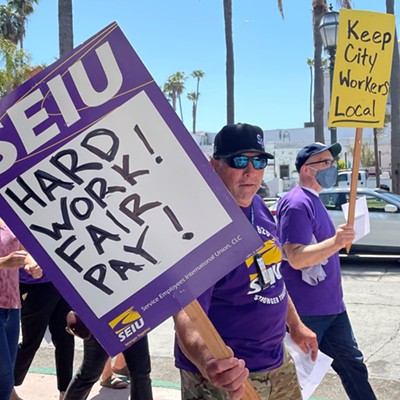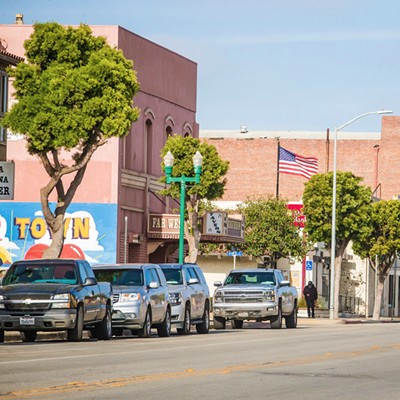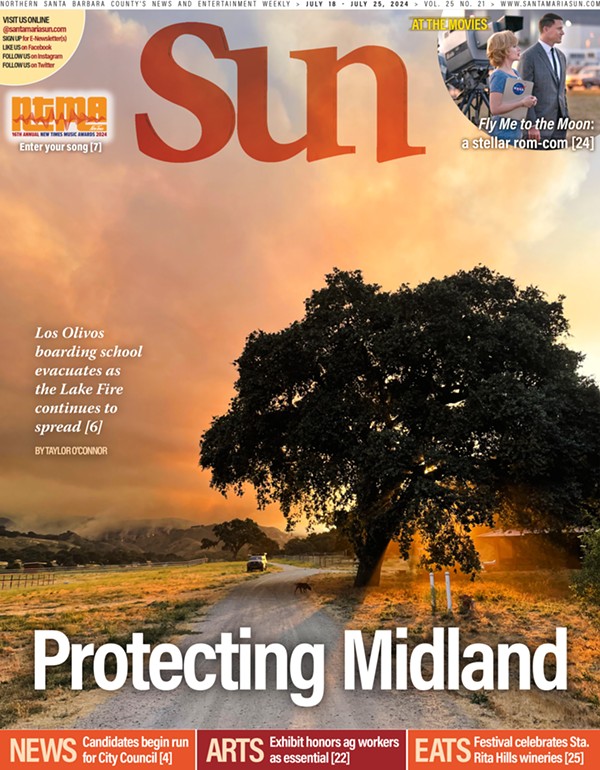Growing up, Judy Saki pushed away her Japanese heritage and fought to be “very American,” she said.
“I think part of the reason I was rejecting my Japanese heritage in my younger years was because it felt like I needed to fit a mold or something,” Saki said. “It’s something that really affected me, feeling like I couldn’t embrace my own family’s culture in a positive way, but on the other hand I look Japanese. I’m a Japanese-American woman and there’s no getting away from that.”
Saki’s grandfather was one of the Japanese pioneers, or issei in Japanese, who arrived in Santa Maria in 1903 for the burgeoning sugar beet industry in Santa Maria. He and Saki’s grandmother raised eight children in the Santa Maria Valley. Saki explained that her parents were in an arranged marriage, with Saki’s mother coming overseas to California from Japan to marry her father.
Saki’s mother wanted her daughter to be a “traditional Japanese girl,” but Saki said she struggled because she wanted to fit in and saw herself as “American.”

Saki, 62, said she’s since pivoted, embraced her heritage, and is researching her past to get a better understanding of her family history. She serves as the secretary for the Santa Maria Japanese Community Center—a nonprofit organization that brings fellow Japanese residents together and works to preserve Santa Maria Valley’s Japanese culture and history.
The Santa Maria Japanese Community Center has about 60 members and used to hold meetings in the old Japanese school, built in 1925, until the building was sold in 2017. With no meeting space, the group started going to restaurants to get together until the pandemic hit in 2020, as many members were considered at-risk, Saki said.
After more than a decade of advocacy, the nonprofit celebrated a groundbreaking ceremony on Sept. 6 for the new Enos Ranch Park and Cultural Center where the group can host meetings; provide Japanese cooking, language, and cultural arts classes; preserve local family history; and honor the issei.
Construction will cost about $6 million total, and the city received a $500,000 grant from the U.S. Department of Housing and Urban Development and $300,000 from the community center, Santa Maria Recreation and Parks officials told the Sun in an email. The department expects more funding to be solicited as the project moves forward.
“We want to educate people and ourselves because a lot of us, even the second generation, are dying off. They are at that age. A lot of the sanseis [third generation] and fourth generations don’t know a lot about their culture,” Saki said. “Like me, they’ve become so Americanized that a lot of it’s kind of lost, so we’re trying to bring it back for all people to learn about Japanese culture—whether they are full-blooded Japanese or not.”
Local history

Single Japanese men started immigrating to the Santa Maria Valley in the 1900s to work in the sugar beet industry as farmers, Santa Maria Historical Society Curator Shelley Klein told the Sun.
“There were very interesting immigration laws back then. In the 1920s, there were a lot of immigration laws that limited all Asian people,” Klein said “So it’s amazing that they were able to come and do all of this stuff.”
Women came overseas as part of arranged marriages, and families grew across the valley, working in agriculture or operating their own farms, storefronts, and businesses. During this time, residents in Guadalupe and Santa Maria developed their own Japanese associations to preserve their culture and pass down the language to next generations, she said.
When the U.S. joined World War II in December 1941, Japanese families were relocated to internment camps in 1942 because of Franklin D. Roosevelt’s executive order, which stated that all people of Japanese descent, including U.S. citizens, were to be incarcerated, according to the National Archives.
“After the internment camps, not as many people came back. If you look at the yearbooks in Santa Maria High School from the 1930s and the early ’40s, there’s lots of Japanese families and then nothing until almost the ’50s,” Klein said.
Many Santa Maria Valley Japanese families went to the Gila River Relocation Center about 50 miles south of Phoenix, Arizona—one of 11 internment camps. Families could only bring what they could carry, leaving behind their properties, homes, and businesses.
“I believe the people who were landowners, who had stores and had made a life and been here a long time, it was hardest on them. To lose that, to say, ‘How could the government turn on us, even to some who were born here?’” Klein said.
From 1942 to 1945, more than 16,000 Japanese Americans lived in the Gila River camp and worked for wages growing produce, working in war production, or teaching in the camp’s elementary and high schools, according to Densho Encyclopedia.
Most Santa Maria Japanese Community Center members’ parents and grandparents went to Gila River and came back to the valley, including the family of Jo Anne Nishino Spencer, the Japanese Community Center’s vice president.
“My father’s family was actually living in the San Pedro area, but their relatives lived here [in Santa Maria]. The Minamis called them over because they all wanted to go to the same camp,” Nishino Spencer said. “They moved here first and went to camp with the Santa Maria relatives.”
Her father played baseball, a popular pastime for people in the camps, for the high school’s Gila River Eagles team under the guidance of Kenichi Zenimura, a Japanese-born professional baseball player from the Fresno area who was also incarcerated in Gila, she said. Zenimura organized a 32-team baseball league, and the Gila River Eagles went on to later become champions, according to Densho Encyclopedia.
“It was an outlet; my dad loved baseball. The team would get together and celebrate. That’s the most positive experience that came out of camp for my family,” Nishino Spencer said.
Future generations

Wes Koyama had always wanted to learn about his Japanese heritage, but suppressed his interest because his parents wanted him to “be American” after returning from internment, said Koyama, the community center’s president.
“There was the shame of the war. We wanted to assimilate,” Koyama said. “We wanted to wake up being white. I felt ashamed of being Japanese.”
Koyama’s grandfather arrived in the United States in 1906 and settled in Santa Maria in the early ’20s after working on the railroads in Northern California and then growing cotton in Mexico. When his family came back in the 1950s from internment camps in Colorado, they started their own sugar beet and broccoli farm.
Born in 1966, Koyama didn’t get to go to the local Japanese school or learn Japanese because he was too young, but he went to judo instead, he said.
“I had a lot of regret not knowing my actual heritage until I was older, until I actually joined the club,” Koyama said.
With the new community center, Koyama and fellow club members want to preserve their grandparents’ and parents’ history to share with the younger generations or the general public, he said. In the cultural center, members will submit photographs or heirlooms to be preserved in a gallery in the center’s lobby.
“I think it’s important; preserving that is one of our key goals to say this is what we had done, the first generation. Maybe some of my relatives … [will] want to come back and they’ll learn more about what happened here, what we did and what we accomplished,” Koyama said.
Koyama’s parents and grandparents have passed away, his four siblings moved away, and four out of his five children left Santa Maria—similar to many other local Japanese families—but Koyama and his fellow members stay because it’s home.
“Santa Maria has always been my home, and there’s something comforting about Santa Maria,” he said. “It just draws me back.”
Reach Staff Writer Taylor O’Connor at [email protected].



